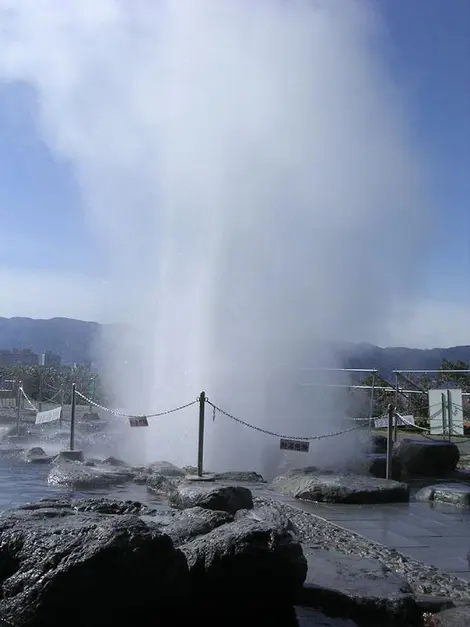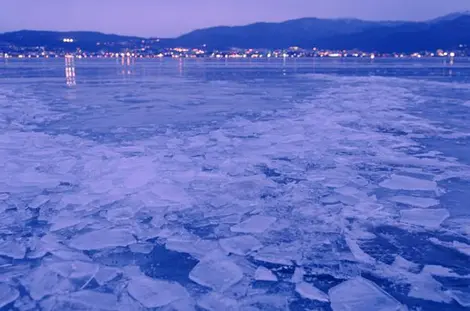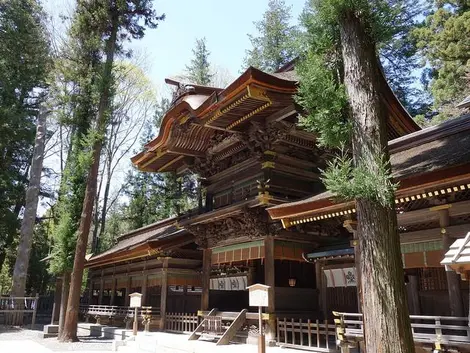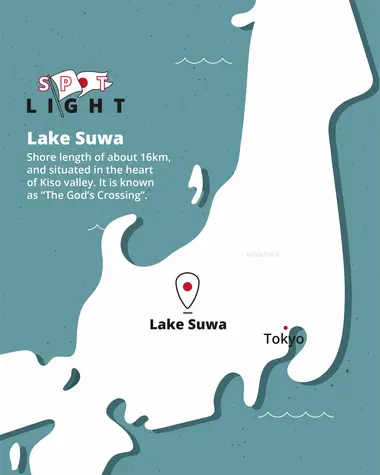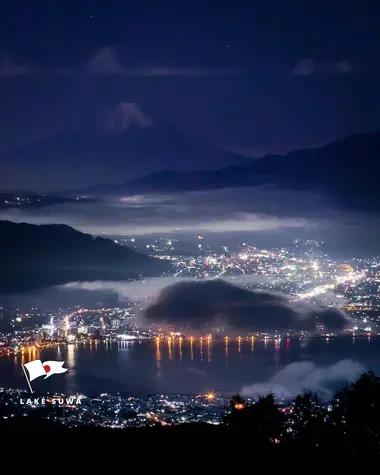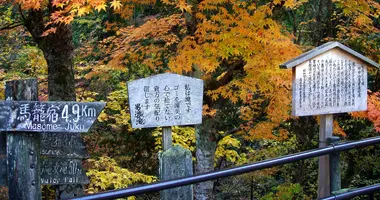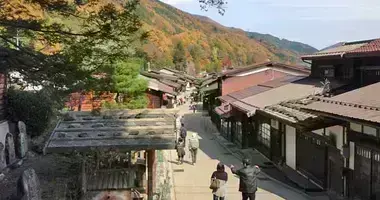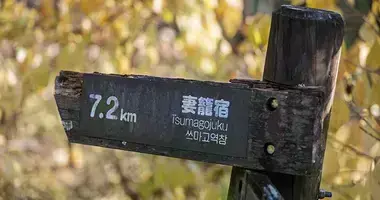Lake Suwa 諏訪湖
- Published on : 14/01/2016
- by : Antoine Legastelois
- Youtube
The God's Crossing
With a phenomenon called "the God's Crossing," who wouldn't want to visit Lake Suwa!
Lake Suwa, or Suwa-ko (諏 訪 湖), is in the center of the prefecture of Nagano, at the heart of Kiso Mountains (木 曽 山脈).
With about 16 kilometers in circumference, it is the 24th largest lake in the area, behind Lake Biwa (琵琶湖), the largest and oldest of all.
Lake Suwa, it turns out, is the source of the River Tenryu (天 竜 川), 213 km long, which then flows into the Pacific Ocean from Shizuoka prefecture.
On the banks of the lake you will find the city of Suwa (which gave its name to the lake), Okaya (岡 谷 市) and Shimosuwa (下 諏 訪 町).
The miracle of nature, Omiwatari
Beyond the beauty of the place, the Lake Suwa is most famous for a natural phenomenon quite fascinating that manifests in its waters.
This "miracle of nature" is called "Omiwatari" (御 神 渡 り), or the "God's Crossing." What is it that happens exactly? Every winter when the lake freezes completely and the outdoor temperature is maintained for days at a very low temperature, the ice cracks and fissures form in the ice.
Slowly, as days go past, a sort of ice ridge forms on the surface.
Why is this? The answer is actually in the depths of the lake. Lake Suwa has a hot spring which generates a considerable temperature difference, so the laws of physics produce this "miracle".
According to legend, the god of the lake - Takeminakata no kami - would leave his sanctuary to rejoin his beloved - the goddess Yasakatome - on the opposite bank. And this trip would result in these beautiful peaks on frozen waters. A much nicer way to explain the phenomenon!
Suwa-taisha shrine
Not far from the city of Suwa, do not hesitate to visit the Shinto shrine Suwa Taisha (諏 訪 大 社). Surrounded by majestic trees, and built on a mountainside, the site is impressive and worth a look. With 1200 years of existence, this is one of the oldest Shinto shrines in Japan. From 1871 to 1946, the Suwa Taisha was officially designated by the state as an "important national shrine of the highest rank" (官 幣 大 社).





